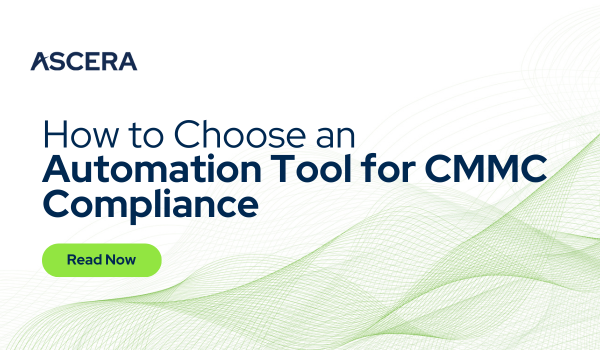As the Cybersecurity Maturity Model Certification (CMMC) framework evolves, defense contractors must ensure they meet strict compliance requirements to handle controlled unclassified information (CUI). Achieving and maintaining CMMC compliance can be resource-intensive, making automation tools a critical asset. However, not all automation solutions are created equal. Here’s how to evaluate and choose the right tool for your organization.
1. Ensure Integration with Your Existing Tech Stack
CMMC compliance spans multiple areas of your IT infrastructure, including identity and access management, endpoint security, logging, and vulnerability management. An effective automation tool should integrate seamlessly with your existing security solutions, such as:
- SIEM platforms (Splunk, Microsoft Sentinel, etc.).
- Endpoint Detection and Response (EDR) solutions.
- Identity providers (Azure AD, Okta).
- Vulnerability scanners (Tenable, Qualys).
Without strong integrations, you may end up manually transferring data between systems, which defeats the purpose of automation.
2. Make Sure Your Automation Is Actually Automated
Many so-called “automation” tools are little more than guided form fillers — offering a TurboTax-style interface that still requires users to manually input data, interpret controls, and manage compliance tasks by hand. While a structured workflow is helpful, real automation should go further.
A truly automated CMMC compliance tool should:
- Auto-collect evidence from existing security tools instead of requiring manual uploads.
- Pre-populate compliance documents like SSPs and POA&Ms with real data from your environment.
- Continuously monitor security controls and update compliance status in real-time.
- Generate reports dynamically without requiring users to re-enter information every assessment cycle.
If a tool still requires you to type out control justifications, track evidence manually, or repeatedly input the same data across different compliance documents, it’s not true automation — it’s just a compliance checklist in digital form.
3. Evaluate Automated Reporting and Audit Readiness
One of the main benefits of automation is reducing the burden of preparing for assessments. Your tool should be able to:
- Continuously track and report compliance status.
- Provide dashboards that map your progress against CMMC controls.
- Generate evidence reports that auditors can review without manual effort.
A solution that only provides security alerts but lacks structured reporting won’t be sufficient for a CMMC assessment.
4. Assess Cost vs. Value
Some automation tools charge per user, while others price based on features or data volume. Compare costs with the actual value provided:
- Does the tool replace the need for additional compliance personnel?
- Will it reduce the time spent preparing for audits?
- Can it prevent costly compliance violations?
A tool that saves significant time and resources is often worth a higher upfront investment, especially compared to the financial risks of non-compliance.
5. Verify Vendor Credibility and Support
Choosing an automation tool means partnering with a vendor that understands CMMC. Before committing, check:
- Whether the vendor is purpose built for CMMC or just another framework (ex. objectives, SPRS score).
- The quality of their customer support and in-house compliance expertise.
- User reviews from other defense contractors or suppliers.
A vendor built for other security frameworks may fall short in providing support (automation and workflow) specifically for the nuances within CMMC.
Final Thoughts
Selecting the right automation tool for CMMC compliance isn’t just about convenience — it’s about ensuring continuous security and audit readiness. The best tools simplify NIST 800-171 compliance, integrate with your existing security stack, automate reporting, and help you maintain compliance with minimal manual effort. Carefully vet solutions against these criteria to ensure your organization stays secure and compliant in an evolving regulatory landscape.
